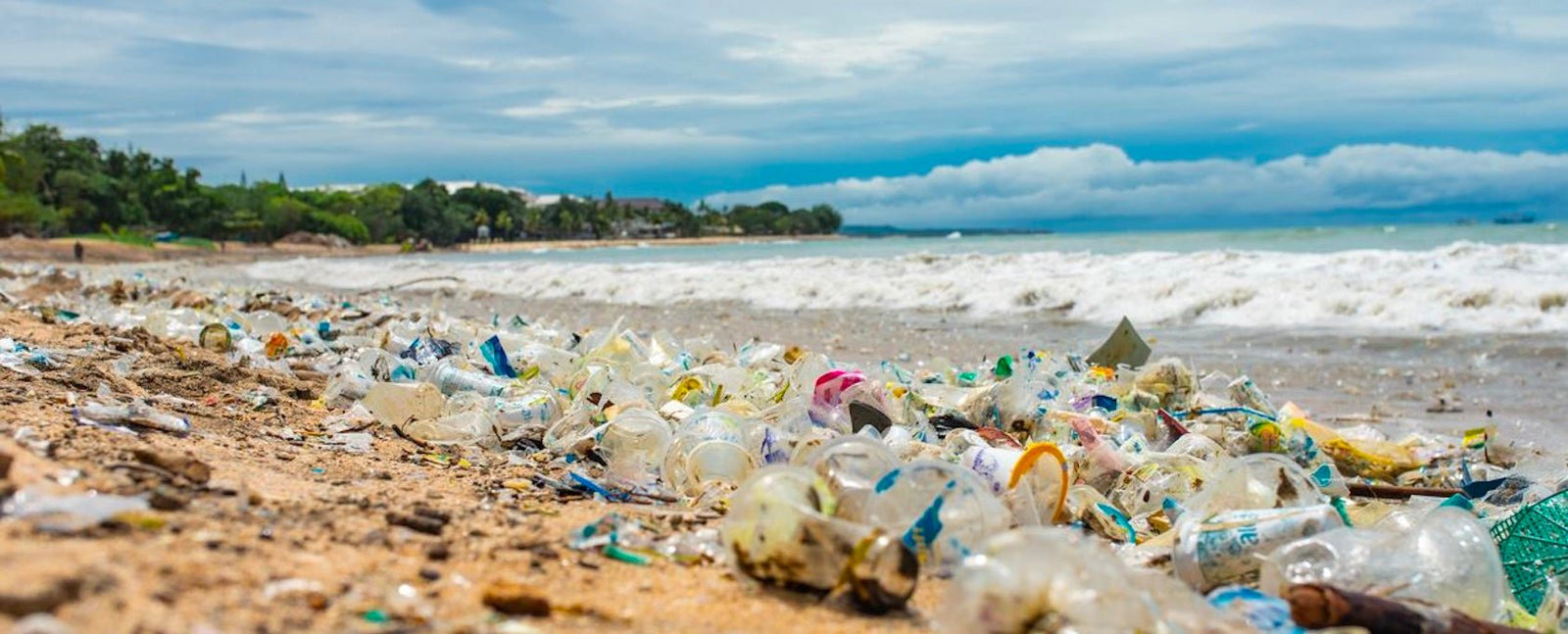
Deep Dive Into Water Contaminants
by Duncan Peters August 04, 2022 4 min read
Inorganic contaminants
Inorganics can include a combination of metals, salts, compounds, particles, and mineral complexes which do not contain carbon; carbon compounds are organics. Inorganic contaminants include natural or man-made elements or compounds that can contaminate water or be concentrated in the water cycle. Water is not pure H₂0; some of the most common contaminants or conditions include carbon dioxide and other gases, salts like Chloride, Sodium, Carbonate, Alkalinity, Calcium, Potassium, Iron, and Manganese. For the most part, the inorganic contaminants create aesthetic problems such as: a salty or bitter taste, discoloration, or even chemical scale/corrosion.
How do Inorganics impact health?
Inorganic contaminants in your drinking water can pose an acute or chronic health risks or concerns with conditions such as cancer, liver damage, tumors, damage to the nervous and circulatory systems, kidney disorders, bronchitis, anemia, delayed mental and physical development, gastrointestinal disorders, adult degenerative disorders, and autoimmune disorders. The following are common Inorganic Compounds or Conditions found in drinking water for both city water and private water systems and their effects on human health:
-
Antimony - May affect the liver and gastrointestinal system.
-
Arsenic - Can cause cancer and skin lesions.
-
Barium - Effects include vomiting, abdominal cramps, diarrhea, difficulty breathing, increased or decreased blood pressure, numbness around the face, and muscle weakness.
-
Beryllium - Not a huge health threat but is not well absorbed in the gut.
-
Cadmium - Low level exposure to cadmium decreases bone density and disrupts bone composition. Tends to build up in the kidneys.
-
Chromium - Allergic dermatitis (skin rash or inflammation) liver damage. Kidney problems.
-
Copper - Can cause stomach pain, nausea, vomiting and diarrhoea.
-
Cyanide - Coma, death, lung injury, seizures, loss of conciousness.
-
Fluoride - Increases the risk of skeletal fluorosis.
-
Lead - In children it can cause damage to the central and peripheral nervous system, learning disabilities, shorter stature, impaired hearing, and impaired formation and function of blood cells.
-
Mercury - Irritability, nervousness, changes in vision or hearing, and difficulties with memory.
-
Nitrates / Nitrites - Increased heart rate, nausea, headaches, and abdominal cramps.
-
Selenium - Discoloration of the skin, pathological deformation and loss of nails, loss of hair, excessive tooth decay and discoloration, lack of mental alertness, and listlessness.
-
Thallium - Sudden hair loss, hair discoloration, transverse white lines on nails (Mee's Lines), pain in muscles and joints, sleep disorders, gastrointestinal irritation, nerve damage, and fatigue.
Microbiological contaminants
Microbiological agents range from single cell organisms to small living things such as Bacteria, Total Coliform Bacteria, Parasites, Protozoans, Fungi, and Viruses. In many cases, there can be virtually no warning sign of a microbiological problem until someone becomes sick. This is why proactive monitoring and regular screening is strongly suggested.
What are the Categories of Microbiological Agents?
Common Microbiological Agents can be divided into three categories, Bacteria, Waterborne Pathogens, and Protozoans.
-
Bacterial contaminants include Bacteria, Total Coliform Bacteria, Nuisance Bacteria, Pink Bacteria, Iron Bacteria, Slime Bacteria, Sulfate-Reducing Bacteria, and Fecal Streptococcus.
-
Waterborne Pathogens include E. Coli, Legionella, Shigella, Fecal Coliform, Campylobacter, and Salmonella.
-
Protozoans include contaminants such as Giardia, Cryptosporidium, and Blastocystis hominis which can be disease-causing.

How do Microbiological Agents impact health?
They can be characterized as pathogenic or disease-causing or can serve as vectors that facilitate the spread of disease or other disorders, such as Autoimmune diseases. Common disease-causing agents include Total Coliform Bacteria, E. coli, Waterborne Pathogens, Giardia, Cryptosporidium, Legionella, Shigella, E. Coli 0157:H7, Campylobacter, and Salmonella.
Other microorganisms, such as: Nuisance Bacteria, Pink Bacteria, Iron Bacteria, Slime Bacteria, Sulfate-Reducing Bacteria, and standard plate count (heterotrophic bacteria) are typically associated with nuisance or aesthetic related issues, but they can also be associated with Corrosion and the premature failure of water-related infrastructure and equipment and elevated levels of corrosion by-products, such as: Copper, Chromium, Lead, Zinc, and other metals.
The following are common Microbiological Agents found in drinking water for both city water and private water systems and their effects on health:
-
Bacteria - Diarrhea, vomiting, cramps, nausea, headaches, fever, fatigue, and even death sometimes.
-
Total Coliform Bacteria - Upset stomach, vomiting, fever, or diarrhea.
-
E. Coli - Diarrhea, cramps, nausea, headaches.
-
Giardia, Cryptosporidium - Diarrhea, steatorrhea, abdominal cramps, bloating, flatulence, weight loss, and vomiting.
-
Viruses - Gastrointestinal illness, hepatitis, meningitis.
Organic contaminants
Organic contaminants include herbicides, pesticides, and plant and animal tissues, and are usually expected to cause adverse impacts on the environment. Trace levels of organic contaminant residues present in the soil, water, air, and sometimes food may result in harmful effects for human and environmental health.

Organic contaminants can be found in many water supplies with pesticides and herbicides being used on farms more often. The compounds seep into the ground and from there, make their way into water supplies after rain. Organic contaminants normally don't pose a risk to humans immediately but the main issue comes with their ingestion over long periods. Organic compounds can cause cancer, liver and kidney damage, birth defects, and other chronic diseases when continually ingested. Read more on their effects on health here.
Radiological contaminants
Radiological water contaminants are undesirable radioactive substances that have entered a water supply. They are also known as radionuclides. Naturally-occurring radiologicals are found everywhere: the earth’s crust, food, the sun’s rays and even our DNA. Radionuclides like uranium, radium and radon are often found in areas with granite bedrock. Potassium is present in bananas, brazil nuts and carrots, as well as in among other foods. Typical, naturally-occurring radiologicals found in drinking water include , isotopes of radium, uranium and radon, among others.

Radiologicals can also originate from man-made sources, such as waste from nuclear power plants and some medical facilities. Released, or improperly stored radioactive particles can seep into groundwater, or bind to particles of dust in the air. These particles can then travel for a distance before settling into surface drinking water sources, like rivers, lakes and streams that supply a community’s drinking water.
While radiologicals are found everywhere, they aren't bad for you in small doses, all humans are exposed to tiny amounts of radiation each day and this is known to be harmless. Problems occur when people are exposed to large amounts of radiation. In large doses, radiation can be extremely harmful, causing radiation poisoning and cancer over longer periods. Read more on radiation in water here.
Learn More
To find out more about how WaterOne, a new water purifier designed to eliminate contaminants from your drinking water, click here.
Get more out of IF
Join our mailing list to learn more about our innovative technology, be the first in line to experience its benefits, and join a community of people who want better water and better health.




